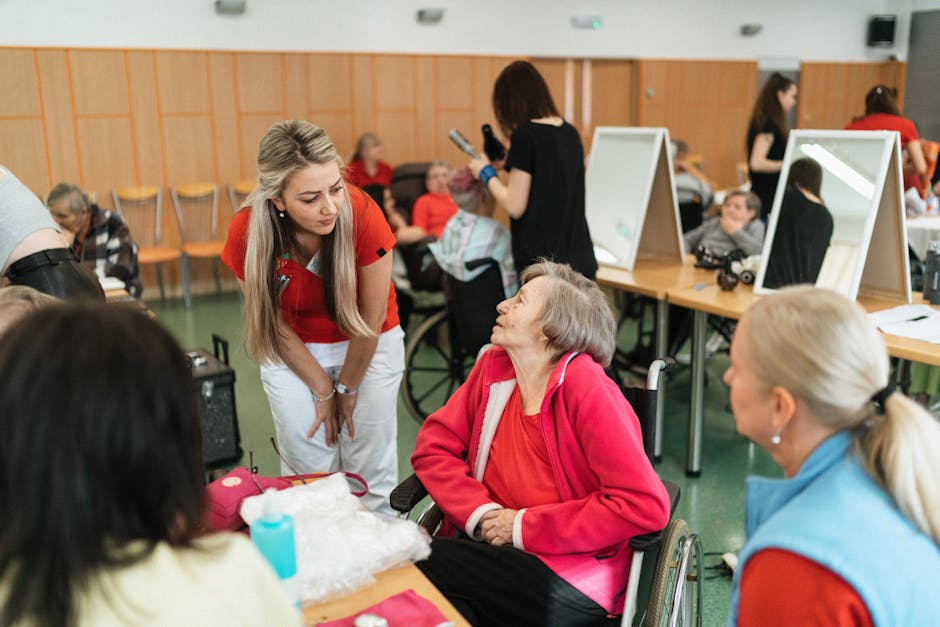Elderly Care Homes: What You Need to Know
Choosing the right care home for an elderly loved one is a significant decision with both emotional and practical implications. Care homes provide safety, comfort, and specialized services for individuals who can no longer manage daily tasks independently. As the global population ages, demand for high-quality elderly care homes has risen. This article explores key aspects of these facilities, their operations, and factors to consider when selecting one.
1.

Understanding Elderly Care Homes
Elderly care homes, also known as residential care facilities or nursing homes, support individuals who need assistance with daily activities such as bathing, dressing, meal preparation, and medication management. These facilities employ professional caregivers and medical staff to ensure round-the-clock support tailored to residents' needs.
Care homes generally fall into two categories: residential homes and nursing homes. Residential homes provide general assistance with daily living, while nursing homes offer specialized medical care for those with chronic illnesses or disabilities. Understanding these differences is crucial when evaluating options.
According to the World Health Organization (who.int), the number of people aged 60 and above is expected to double by 2050. This demographic shift highlights the growing need for facilities that address both physical and emotional well-being.
2. Services Provided in Care Homes
A quality elderly care home offers a wide range of services to meet residents' physical, emotional, and social needs, including:
- 24-hour supervision and personal assistance
- Nutritious meal preparation tailored to dietary restrictions
- Housekeeping and laundry services
- Health monitoring and medication administration
- Recreational activities for mental stimulation and social interaction
Some care homes also provide specialized services such as dementia care or physiotherapy. Facilities with trained staff in these areas can significantly improve residents' quality of life.
3. Factors to Consider When Choosing a Care Home
Selecting the right care home involves evaluating several factors, including location, cost, staff qualifications, cleanliness, safety measures, and quality of amenities. Visiting potential facilities provides firsthand insight into their operations.
The cost of care homes varies widely based on location and level of service. In the United States, the average annual cost of a private room in a nursing home was approximately $108,405 in 2022 (genworth.com). Discussing financial options early can help prevent unexpected burdens.
Speaking with current residents or their families offers valuable insights into daily life at a facility. Reviews often reveal aspects not covered in brochures or official tours.
4. Emotional Impact on Families
Moving a loved one into a care home can be emotionally challenging for families. Feelings of guilt or worry are common, but understanding that this decision prioritizes safety and well-being can ease concerns.
Many care homes encourage family involvement through regular visits, participation in events, or virtual check-ins for those living far away. Staying connected helps residents feel supported while receiving professional care.
Interestingly, many families report improved relationships after transitioning caregiving responsibilities to professionals. This shift allows them to focus on emotional bonding rather than logistical challenges.
5. Regulations and Accreditation
Elderly care homes are subject to strict regulations to ensure quality standards and resident safety. Government bodies conduct regular inspections covering hygiene, staffing levels, food quality, and medical practices.
Before selecting a facility, verify its accreditation status with national or local regulatory authorities. In the UK, the Care Quality Commission (cqc.org.uk) provides detailed reports on registered care homes based on routine inspections.
A lack of proper licensing or poor inspection ratings should serve as red flags when choosing a facility for your loved one.
6. Adapting to Life in a Care Home
The transition into a care home can be challenging for new residents. Providing emotional support during this adjustment period is essential. Encouraging participation in social activities can help foster friendships and reduce feelings of isolation.
Care staff play a vital role in easing this transition by understanding individual preferences and creating personalized care plans. Open communication between families and caregivers ensures that residents’ needs are consistently met.
While it may take weeks or even months for someone to feel fully at home in their new surroundings, patience and proactive involvement can make the process smoother.
7. Future Trends in Elderly Care Homes
Innovations such as telemedicine consultations allow residents quick access to healthcare professionals without needing physical travel.
Certain facilities are also introducing smart-home features like fall-detection systems and automated lighting designed for senior safety. These advancements aim to improve quality of life while promoting greater independence.
Beyond technology, there is an increasing focus on holistic approaches incorporating wellness programs such as yoga sessions or art therapy tailored for older adults.
Caring for an aging population requires compassion and informed decision-making. Research-based knowledge combined with firsthand observations helps families choose the best possible environment for their loved ones.
